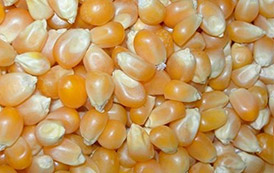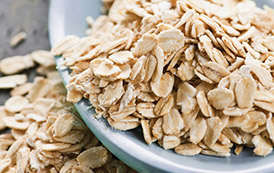Types of Cereals and Pulses


Types of Buildings
January 23, 2020

Types of Communications
January 23, 2020Cereal and pulse crops are staple foods that provide essential nutrients to many populations of the world.
What are Cereals?
- A cereal is any grass cultivated for the edible components of its grain. These are produced in large quantities and provide a large amount of food worldwide than any other crop. These are therefore termed as staple crops.
- Cereals are rich in vitamins, proteins, carbohydrates, minerals, fats and oil. They are composed of bran, germ and endosperm. When the bran and germ are removed, the endosperm is known as carbohydrate.
- E.g. Rice, wheat, etc.
What are Pulses?
- Pulses are edible seeds of legume family. They are annual crops and are harvested as dry grains. They are healthy, nutritious and easy to cook.
- Hundreds of varieties of pulses are grown throughout the world. The production of pulses improves soil quality, decreases greenhouse gases and requires less water than any other crops.
- Dry beans, chickpeas, Etc.
Difference Between Cereals and Pulses:
| Cereals | Pulses |
|---|---|
| 1. Cereals contain high levels of carbohydrates. | 1. Pulsesare rich in nutrients like proteins and amino acids. |
| 2. Larger commercial production/farming. | 2. Comparatively smaller production when compared to cereals. |
| 3. Nearly all cereals belong to Polygonaceae family. | 3. Pulses majorly belong to the legume family. |
| 4. Because of their high carbohydrate content, cereals are one of the staple foods in many countries. | 4. Pulses are important but consumption is comparatively lower. |
| 5. Rice, wheat, corn, barley and maize are all cereals. | 5. Dry beans, chickpeas, cowpeas and lentils are examples of pulses. |
Let’s see some of the cereals and pulses:
| Cereals and pulses | Description |
|---|---|
  |
1. Rice is probably the most common and popular cereal consumed all over the world. 2. Rice cannot grow in cold regions. 3. It is used as the essential food in most of the countries. |
  |
1. It is the staple cereal in continents like Africa and South America and is used as animal feed worldwide. 2. Cornflakes, Popcorn are popular corn products, which has become a favourite snack. |
  |
1. Wheat is a major ingredient in foods like bread, biscuits, pastries, porridge, cakes, pancakes, muesli, etc. 2. New research suggests that eating white bread could benefit health by encouraging the growth of beneficial gut bacteria. |
  |
1. This cereal is popular and highly nutritious one. 2. It is usually grown for malting. 3. Livestock also thrives on it in lands that are not capable of growing wheat due to financial or climatic conditions. |
  |
1. Oats were initially a staple cereal in Scotland, however now oats are very popular as breakfast cereals in almost all countries. 2. Owing to the fibre-rich property, oats are considered vital for all ages and are used as livestock feed. |
  |
1. The moong bean, green gram is mainly cultivated in Indian subcontinent. 2. It is used as an ingredient in both savoury and sweet dishes. |
  |
1. Toor dal is high in fibre, low in calories and good source of protein. 2. It helps you manage your weight and lowering your risk of common chronic health issues, such as Type 2 diabetes and heart disease. |
  |
1. It is also called split Bengal gram. 2. If diabetes bites you, this will bite diabetes with rich minerals like copper & manganese. |
  |
1. Kidney beans have a strong earthy flavour and nice silky texture. 2. They are made into a delicious curry simply called rajma. 3. It is delicious eaten with rice. |
  |
1. Masoor dal is an important part of the diet in many parts of the world. 2. It is basically split lentil without skin and is red in colour. 3. It does not need soaking prior to cooking as it is a soft dal and cooks quickly. |
Importance of Cereals and pulses:


Interesting Facts:
- The word pulse originates directly from the Latin puls meaning “thick gruel, porridge, mush.”
- Humans have relied on pulses for centuries.
- The most widely cultivated pulses in Africa include common beans, pigeon pea, cowpea, groundnuts, chickpea and soybean.
- It takes just 43 gallons of water to produce one pound of pulses, compared with 216 for soybeans and 368 for peanuts.
- As nitrogen-fixing crops, pulses actually enrich soils rather than deplete them of nutrients during the growing process.
- Pulses help to improve food security because as dried seeds, they can be stored for a long period of time without a decrease in nutrition.
- Pulses are drought-tolerant and hardy under frost conditions, making them suitable to a wide range of environments.





